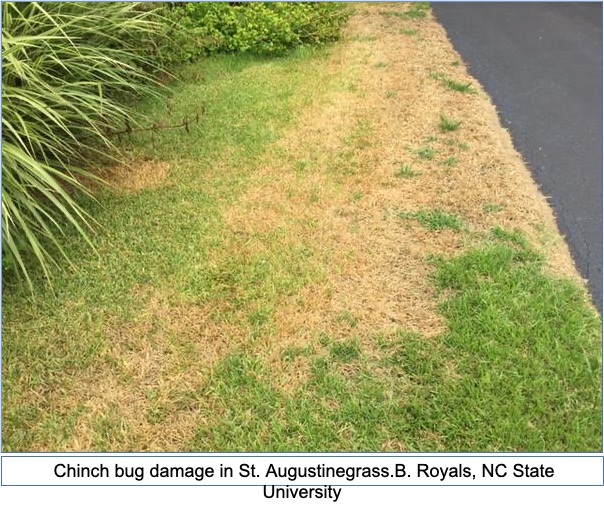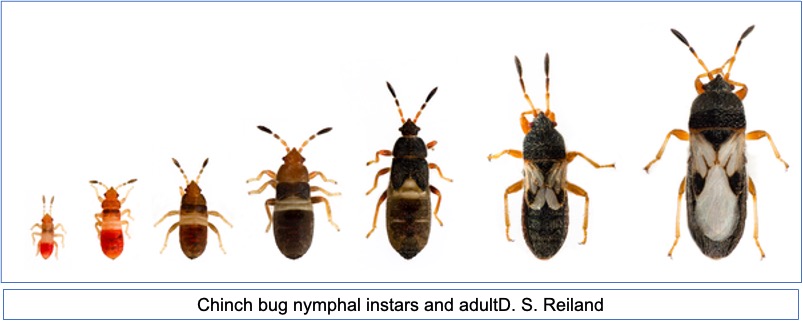Lawn Problem Areas?
go.ncsu.edu/readext?870137
en Español / em Português
El inglés es el idioma de control de esta página. En la medida en que haya algún conflicto entre la traducción al inglés y la traducción, el inglés prevalece.
Al hacer clic en el enlace de traducción se activa un servicio de traducción gratuito para convertir la página al español. Al igual que con cualquier traducción por Internet, la conversión no es sensible al contexto y puede que no traduzca el texto en su significado original. NC State Extension no garantiza la exactitud del texto traducido. Por favor, tenga en cuenta que algunas aplicaciones y/o servicios pueden no funcionar como se espera cuando se traducen.
Português
Inglês é o idioma de controle desta página. Na medida que haja algum conflito entre o texto original em Inglês e a tradução, o Inglês prevalece.
Ao clicar no link de tradução, um serviço gratuito de tradução será ativado para converter a página para o Português. Como em qualquer tradução pela internet, a conversão não é sensivel ao contexto e pode não ocorrer a tradução para o significado orginal. O serviço de Extensão da Carolina do Norte (NC State Extension) não garante a exatidão do texto traduzido. Por favor, observe que algumas funções ou serviços podem não funcionar como esperado após a tradução.
English
English is the controlling language of this page. To the extent there is any conflict between the English text and the translation, English controls.
Clicking on the translation link activates a free translation service to convert the page to Spanish. As with any Internet translation, the conversion is not context-sensitive and may not translate the text to its original meaning. NC State Extension does not guarantee the accuracy of the translated text. Please note that some applications and/or services may not function as expected when translated.
Collapse ▲Do you have a problem area in your lawn that does not seem to be growing well? Have you attempted to remediate the problem but with little success? If so, let’s discuss a few tips that may help resolve these problems and get your grass back to better growth.
One of the best tips I can provide homeowners who desire a top-notch lawn is to remind them that grass, like all plants, needs five essential elements: space, sunlight, water, air, and nutrients. While this may sound simple, we sometimes overlook these requirements thinking that one element can make up for the lack of another. If you desire to grow a lush green lawn, lots of direct sunlight is essential, and no additional amount of fertilizer or water will counteract the lack of sunlight. Similarly, if it is hot and dry and you have no irrigation system, additional fertilizer will not make your grass green if drought stress causes the grass to shut down. If you have problem areas in your lawn, evaluate these areas to ensure they are receiving adequate amounts of these essential elements. You might start with a soil test to eliminate soil fertility issues. This can help determine if additional nutrients are needed or if a pH imbalance is creating a toxic affect.
Insects and diseases can cause problem areas to occur, but pest related issues typically have distinct symptoms and patterns. If you are unsure what these symptoms might look like, then review the NC State Extension turf website and check out the disease and insect pages. You can also contact our Extension office for assistance. One particular issue to be on the lookout for in June and July during hot, dry weather, is chinch bugs in St. Augustinegrass. Chinch bugs are a reoccurring problem in the town of Oriental, causing yellowing and dying of St. Augustinegrass as large numbers of insects build up, sucking the life out of turf. Centipedegrass lawns are rarely affected by chinch bugs, which can help narrow down offending pests.
Once you identify and correct problem issues in your lawn, most warm season turfgrasses will slowly fill back into areas by the creeping action of stolons and/or rhizomes (the stems from which roots and leaves originate). To help encourage this development, you can apply small amounts of nitrogen fertilizer (0.25 pounds per 1,000 square feet) monthly from May through August. Additional irrigation and mulches that can help to conserve soil moisture would also support this new growth. Seed and sod can also be used to accelerate recovery, but each has its advantages and disadvantages. Seed may be an economical choice for large areas, but homeowners rarely have success achieving optimum germination. Warm season grasses need good soil preparation and adequate moisture to grow well. Marketing claims that suggest you can just toss it on the ground and water it in, are simply misleading. Sod is more expensive than seed per square foot, but for small problem areas, it will probably be more effective and can provide instant coverage. Good soil preparation and adequate moisture are still required to establish sod, but as these plants are already mature, establishment is much faster.
For homeowners who would like to learn more about turfgrass management, I would suggest you utilize the maintenance calendars available for all our major turfgrass species available through the NC State Extension TurfFiles website. These calendars can be found linked within the grass species fact sheets, and provide a month-by-month schedule for fertilization, watering, and pest related tasks. Additional information on establishment and care of turfgrass can be found in the NC State Extension publication titled “Carolina Lawns”.
Lastly, if you have issues in your turfgrass and don’t know where to start, then contact Daniel Simpson, at the Pamlico County Extension office at 252-745-4121 or daniel_simpson@ncsu.edu and we can discuss your situation.





